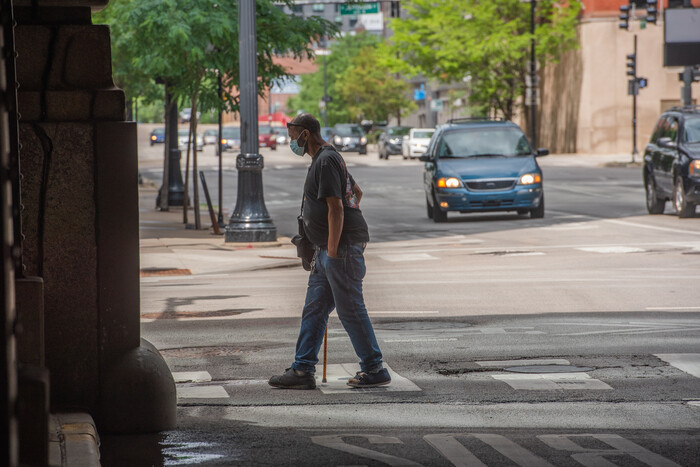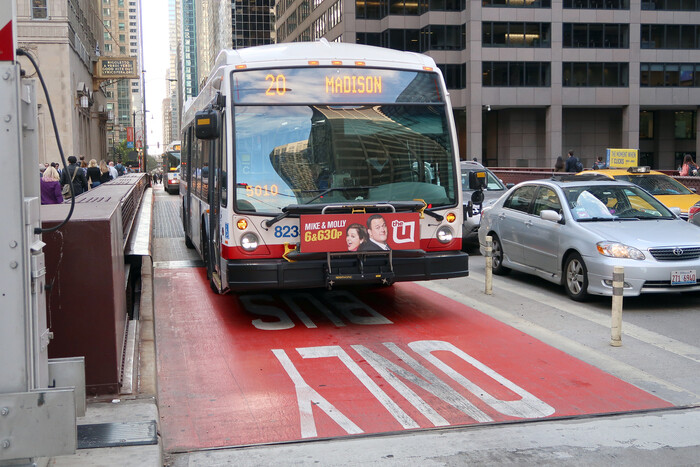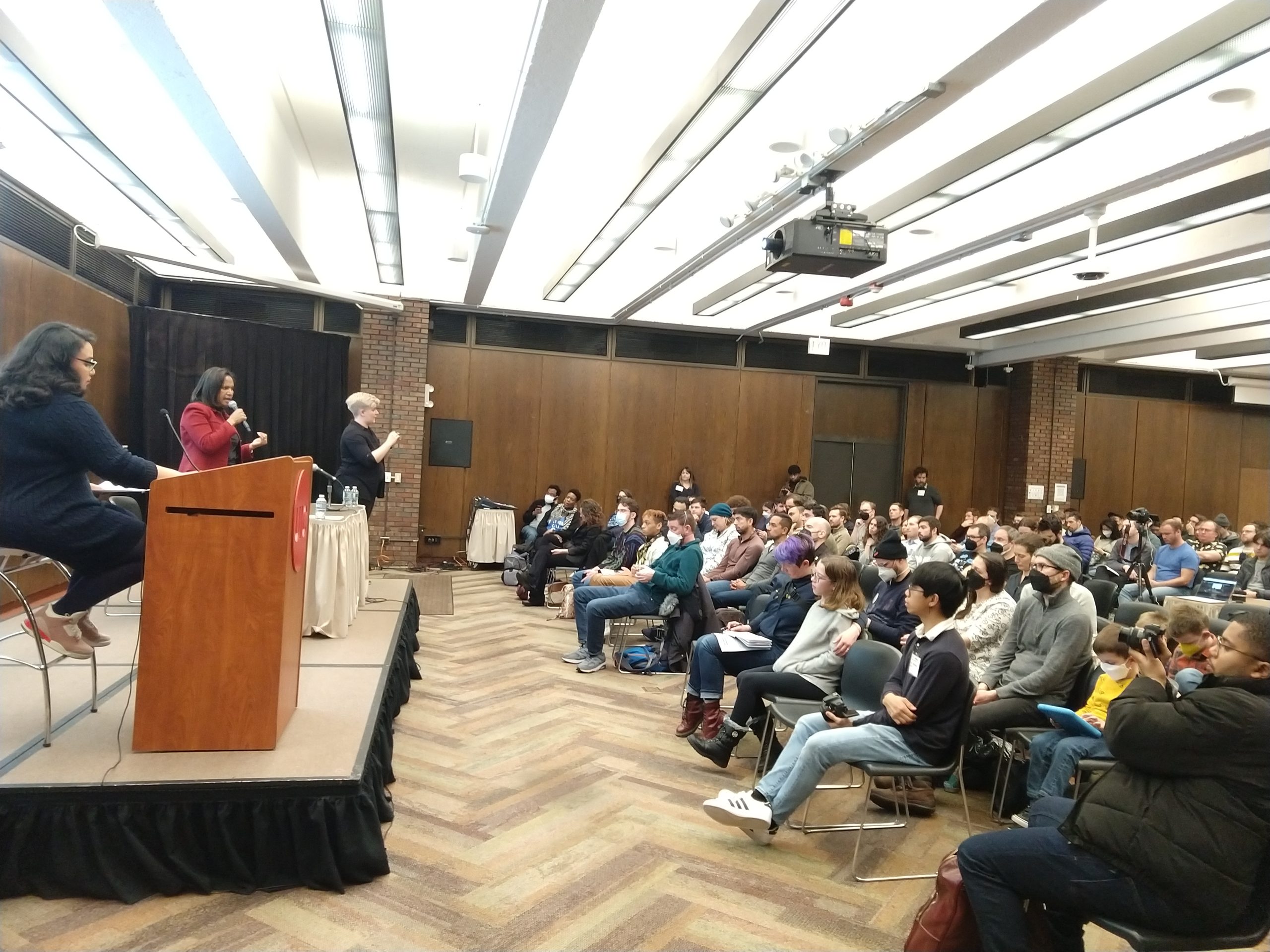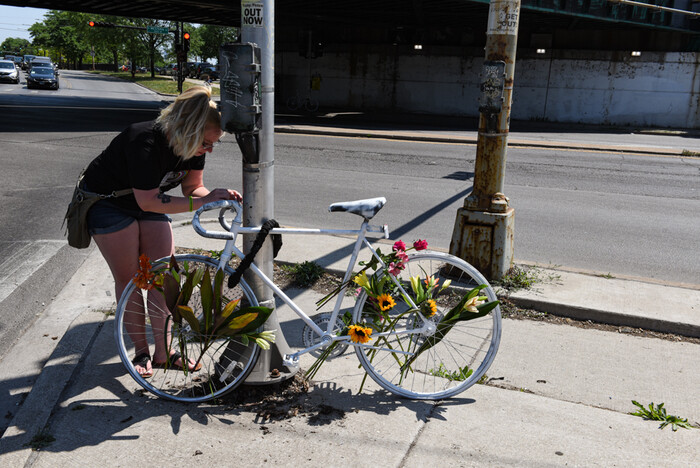2023 was a year of unprecedented progress for our movement.
Dozens of major infrastructure projects across the region created safe places for people to walk and bike where they did not exist before. There are more concrete protected bike lanes, pedestrian bump outs and islands, and smooth trail connections.
Illinois and Chicago passed bold new laws that put us on the path towards a more sustainable and equitable transportation system.
Why does it matter? It makes walking and biking possible and safer for people of all ages and abilities.
Chicago and our whole region stand out as one of the few places in the country that saw at least a 50 percent increase in daily bicycle trips since 2019.
Kudos to all the advocates who flexed their collective muscles and made walking, biking, and transit an issue throughout the year. We showed up at public meetings, hearings, open houses, workshops, charettes, and, yes, on Zoom, to fight for our shared vision of safe streets for all.
Here’s a rundown of some of the most important developments in the past year.
1. NEW STATE LAWS PROMOTE SAFER TRAVEL FOR EVERYONE
Many of the most dangerous roads for people walking or biking in our region fall under the jurisdiction of the Illinois Department of Transportation (IDOT).
Until this year, state law mandated that all intersections on IDOT roads must accommodate the largest trucks on the road. That means building bigger intersections that enable dangerous driving.
Accommodating the largest trucks also meant that there was no space at intersections for building meaningful protection for people walking and biking like pedestrian islands and sidewalk bumpouts.
Thankfully, this is no longer the case.
Active Transportation Alliance and our allies lobbied strongly for getting rid of this requirement. By removing this requirement, communities across the state will now be able to put the safety of people walking and biking first when designing intersections on state roads.

2. THE RED LINE EXTENSION MOVES AHEAD
After decades of inaction, plans to extend the CTA Red Line south made significant strides in 2023.
A key hurdle for moving ahead was cleared in 2022 for when Chicago City Council approved a “transit TIF,” which provides the match funding needed to unlock the investments from federal sources.
The federal investment came in 2023 when the federal government announced a $2 billion grant to support the project.
The 5.6-mile extension will begin at 95th Street and head south to 130th Street, hitting four new stations along the way.
3. MOVING TOWARD A PROTECTED AND CONNECTED BIKE NETWORK
In the past year, Chicago streets have benefited from a surge in the number of protected bike lanes.
By the end of 2023, CDOT will have installed about 4 miles of new concrete PBLs and upgraded about 14 miles of existing PBLs.
This progress was largely made possible by the Chicago Works capital program, which thanks to our local campaign, included unprecedented local funding for walking and biking infrastructure.
4. ILLINOIS CREATES ZERO TRAFFIC FATALITIES TASK FORCE
For the first time ever, the State of Illinois mandated the formation of a task force that will create a set of policy recommendations to eliminate traffic fatalities in the state.
Active Transportation Alliance worked with champions in the Illinois General Assembly to pass the bill, which brings together government officials, advocates, and other stakeholders and deliver a report by the end of 2024.

5. CHICAGO GETTING MORE SERIOUS ABOUT PRIORITIZING TRANSIT ON OUR STREETS
After years of planning and study, CTA and CDOT released their Better Streets for Buses plan, which highlights opportunities for making buses faster and easier to use along key bus corridors.
The plan includes a toolbox of street treatments and analysis of key corridors where they could potentially be applied. It also establishes a framework to guide how CTA and CDOT can collaborate on redesigning Chicago’s streets to achieve faster and more reliable bus service, improved bus stops, and better access to them.
6. GREATER TRANSPARENCY AT CTA
For a transit system plagued with serious reliability problems, CTA took a needed turn toward greater transparency when it released its updated Meeting the Moment Scorecard, which incorporates more data and statistics.
This newest version of the dashboard provides riders with a 13-month operational history alongside key performance indicators that include:
- Service delivery performance, filtered by rail line and bus route
- Bus and rail operator hiring and attrition statistics
- Status of elevators and escalators
- Instances of bus and rail deep cleanings
- Progress with Meeting the Moment objectives
7. SUSTAINABLE TRANSPORTATION GETS MORE ATTENTION AS AN ELECTION ISSUE
With support from 16 partner organizations, Active Transportation Alliance hosted the first-ever mayoral candidate forum on sustainable transportation. During the event, eight out of the nine candidates for Chicago mayor had an opportunity to share their vision for walking, biking, and transit.
The forum had almost 200 in-person participants with hundreds more watching a live-stream, an unparalleled opportunity for residents to hear directly from candidates.

After Brandon Johnson was elected, the new mayoral administration started a process to develop its policy priorities.
The transportation sub-committee was successful in getting our platform priorities adopted in the final transition report, including lowering speed limits, investing in dedicated bus lanes, and creating a connected and protected bike network.
8. ILLINOIS’ FIRST EVER ACTIVE TRANSPORTATION PLAN
This year IDOT launched a new initiative to create a roadmap for a safe, connected pedestrian and bicycle network across the state. This was a great step, but many advocates feared that the plan would not be robust.
In response, Active Transportation Alliance rallied together 69 organizations and municipalities that expressed their support for a series of recommended policies and programs for IDOT to consider as they develop their statewide plan for improving walking and biking.
Policy and program recommendations included requests around funding, staffing, education, speed limits, maintenance, and street design.
9. CITY NOW MUST IDENTIFY CONTRIBUTING FACTORS IN FATAL CRASHES
When fatal crashes occur on Chicago streets, survivors and advocates will now have more information they can use to address the underlaying unsafe conditions.
Active Transportation Alliance helped Chicago City Council pass an ordinance that strengthens requirements for the city’s reporting on fatal crashes and will require a detailed investigation after a fatal crash to identify contributing factors.

10. PLOW THE SIDEWALKS PILOT PROGRAM TAKES A STEP FORWARD
After many decades of policies that have fallen far short of keeping our sidewalks clear of snow in the winter, Chicago seems to be on the verge of vast improvements when it comes to enhancing mobility when the snow falls.
In July, Better Streets Chicago and Access Living’s Plow the Sidewalks Pilot Program ordinance passed in city council 49-1. The ordinance approved the formation of a committee that will establish zones of the pilot program by May 2024 before expanding citywide.
THE COMING YEAR: CREATING A TRANSIT SYSTEM THAT SERVES RIDERS’ NEEDS
The transit system in our region faces a critical juncture, with drastic cuts looming if a funding gap isn’t addressed. These cuts could impact numerous CTA and Pace routes.
The pandemic accelerated this crisis, shedding light on systemic issues like federal funding gaps, inadequate state contributions, and an outdated governance structure.
Efforts have been underway to tackle this impending financial shortfall, leading to the Plan of Action for Regional Transit. The plan, developed by various sectors and supported by detailed recommendations, focuses on service improvements, revenue options, and reimagining regional governance.
As this plan moves to the state legislature, the decisions made will shape either a robust, financially stable transit system or maintain an inequitable, unstable status quo.
Active involvement and advocacy from members and supporters will be crucial in urging policymakers for equitable and robust transit solutions. The coming year will be pivotal for our region’s transit system, demanding collective action to secure its future health.
____________________________
With support from people like you, Active Transportation Alliance works to make our transportation options safer, more sustainable, and more equitable. You can be part of the movement by joining Active Transportation Alliance, renewing your membership, or donating today.

